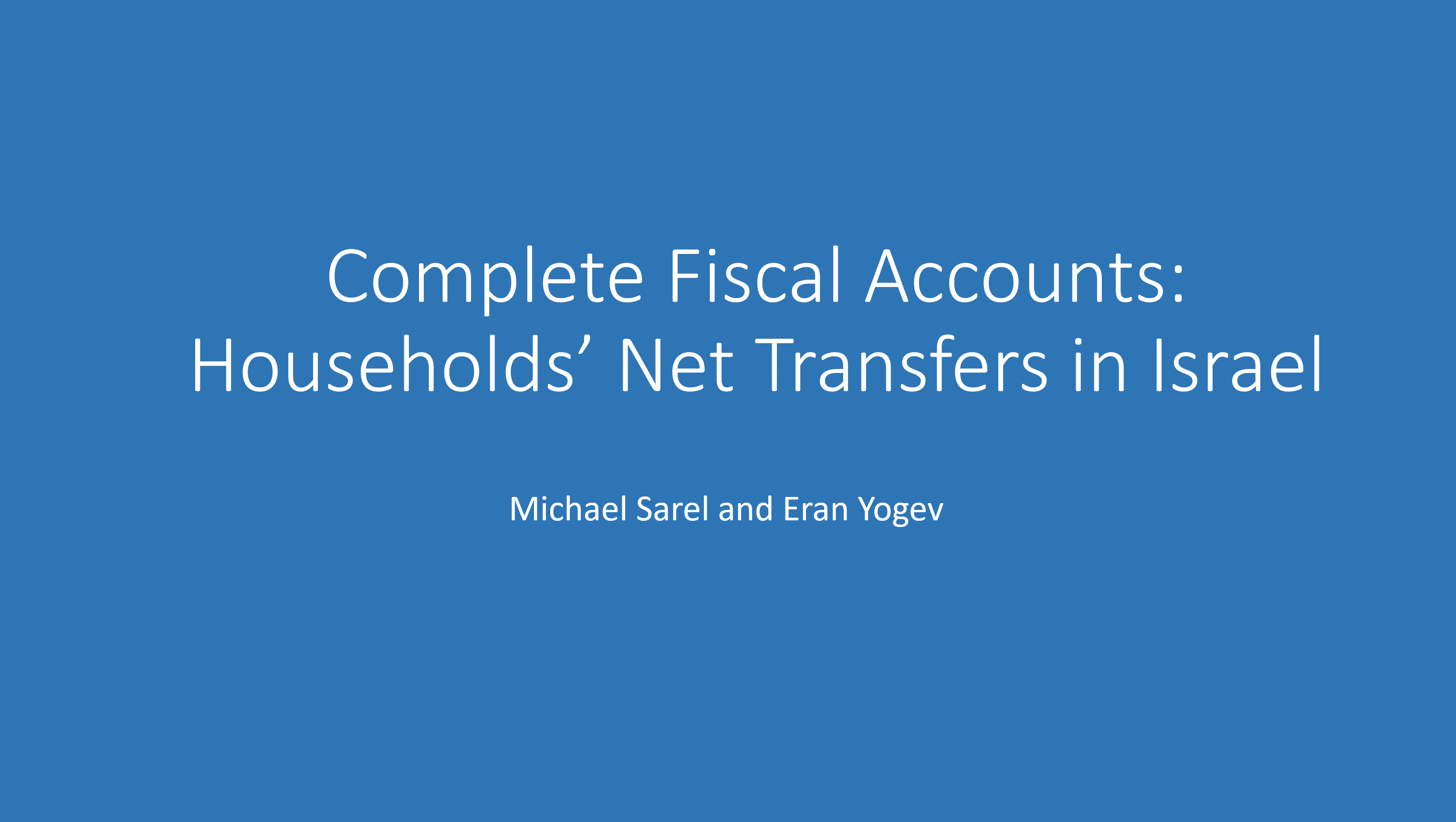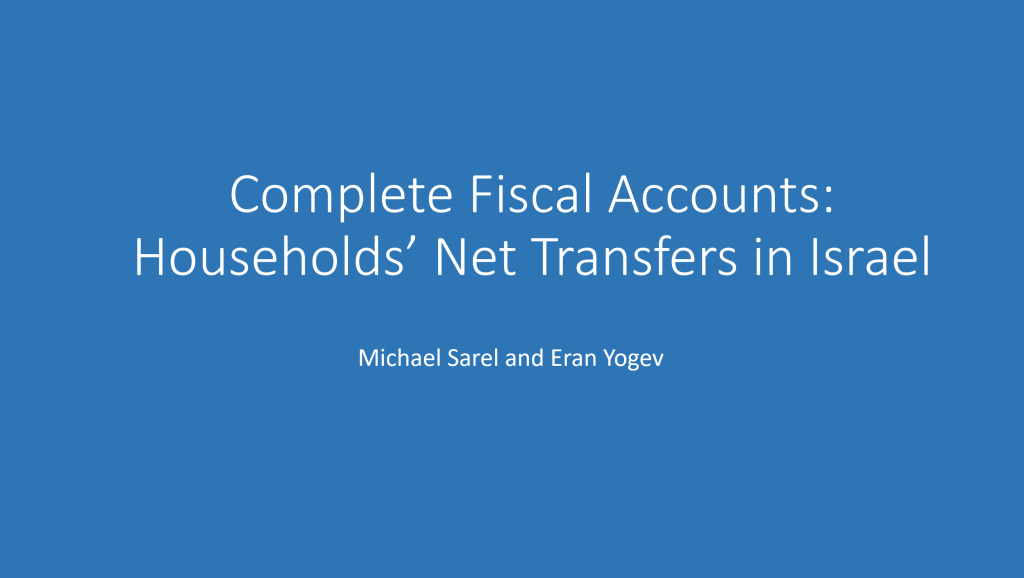In the first chapter of Kohelet Economic Forum’s new chartbook, Eran Yogev and Michael Sarel analyze the distribution of State income and expenditure by household in Israel.
(The chapter is based on “Complete Fiscal Accounts: Households’ Net Transfers in Israel” published in The Economic Quarterly, by Ariel Karlinsky, Tom Sadeh, Eran Yogev and Michael Sarel, and it is recommended to review the full article for information on the distribution of various sections of government expenditure, information on the distribution of different taxes, and for additional details, including a list of all taxes and expenses included in this analysis).
- Main Points:
- As does every country in the world, Israel taxes its residents and provides them with services. The question is: who pays these taxes, and who benefits from said services?
- Our analysis is unique, and includes most of the tax revenue received from the general government (all public-sector institutions), as well as most of its expenditure, with attribution at the household level. All in all, the analysis attributes 405 billion shekels of tax payments, as well as 268 billion shekels (435 billion shekels in secondary analysis) of the value in transfers and services to Israeli households, in terms of 2018.
- Most taxes are paid by relatively high-income households (the top three deciles pay 57% of tax revenue). Similarly, relatively low-income households receive transfers and services at a higher average than do high-income households.
- The average, non-Haredi, Jewish household pays taxes at a higher rate than the value of the transfers and services it receives, while Arab and Haredi households receive, on average, services and transfers at a higher value than their tax payments.
- The distribution of each sector’s households by decile shows that a Jewish, non-Haredi household pays more taxes than a Haredi or Arab household from the same income decile (according to the number of decile>). Within the non-Haredi Jewish sector, nearly 30% of households receive more than they pay in taxes, while in the Haredi sector, close to 80% of households are net benefactors. In the Arab sector the percentage is 60%.
- The distribution of households into deciles in each sector shows that a Jewish, non-Haredi household pays more taxes than a Haredi or Arab household from the same income decile (in terms of the order deciles). Within the non-Haredi Jewish sector, nearly 30% of households receive more than they pay in taxes, while in the Haredi sector, close to 80% of households are net benefactors. In the Arab sector, this percentage is 60%.
- Households with more children receive on average net transfers at a higher value than households with a smaller number of children.
- When considering the total tax payments per household as well as the total value of services and transfers, the rate of income inequality between Israeli households is lower than what is usually published.
- Analysis by Income Decile: Households in the top six income deciles pay taxes at a rate exceeding the value of services and transfers they receive. When taking into account public goods and infrastructure investment, only the top three deciles are characterized by a negative net transfer. The top three deciles paid 57% of the general government’s tax revenues, and the top decile alone paid approximately 28% of tax receipts. Households from the upper deciles receive services and transfers of slightly lower value than those provided to households from the lower deciles. The distribution of the value of services and transfers is affected by the variation between deciles in the number of persons and age distribution. Households with more children receive services and transfers of slightly higher value than those with less children.
- Analysis by Sector: The non-Haredi Jewish sector alone finances public goods (such as security and governance) and infrastructure investment, as well as positive net transfers to the other two sectors. In 2025, non-Haredi Jewish households are expected to pay 232.5 billion shekels more in taxes than the value of services and transfers they will receive from the state, while Haredi or Arab households are expected to receive services and transfers of greater value than the taxes they pay. The value of net transfers to a non-Haredi Jewish household is lower compared to Haredi or Arab households in parallel income deciles within each sector. A non-Haredi Jewish household pays, on average, more taxes than a Haredi or Arab household in a parallel income decile within its sector. In all income deciles, Haredi households receive, on average, services and transfers of higher value compared to Arab households, while non-Haredi Jewish households receive less than both. When including public goods and infrastructure investment, most households receive positive net transfers (financed mainly through government revenues that are not tax revenues), but the gaps between sectors are maintained.
- Inequality: When taking into account all taxes, transfers, and services, and attributing them to households, the estimate for inequality in net income decreases. Official publications on inequality in Israel, which form an important foundation for public decisions on social and economic policy, only take into account a small portion of the taxes that households pay, as well as only a small portion of the broader public sector expenditures that households receive. Such consideration of only a small portion of taxes and the value of services and transfers leads to an estimation of inequality that is higher than the actual inequality, measured after attributing all taxes, services, and transfers at the household level.





